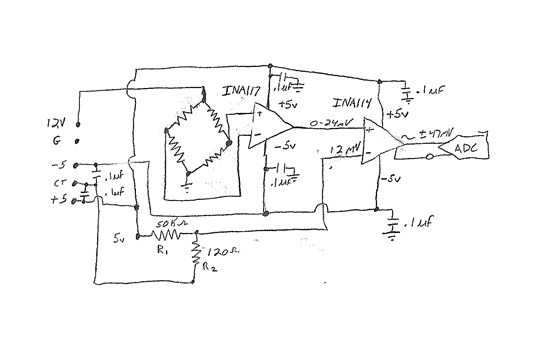HI,
I am relatively new to opamp circuits, but I have designed one that does what I want it to do. The problem is that I am getting a slight oscillation - more like a ripple. There are two amplifiers in the circuit - an INA117 which feeds the non-inverting input of an INA114. I am using a voltage divider to feed the inverting pin of the INA114 to set the point where the output goes negative or positive depending on the input.
The sensor connected to the INA117 is a strain gauge. The purpose of the circuit is to take a unipolar mV signal and turn it into a bipolar mV signal feeding a bipolar input ADC.
The gain on the INA114 is set using a 16.9k ohm resistor to approximately 4X. Below is my diagram. I would really appreciate some recommendations on how to get this little ripple resolved.


